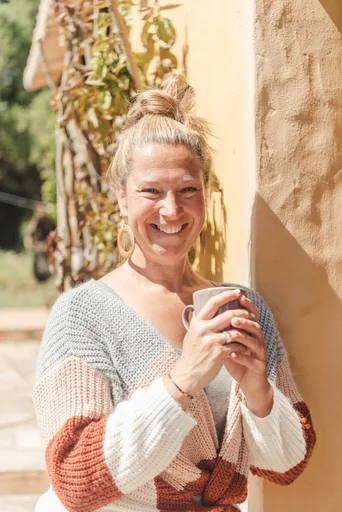The Yoga Sutras: Accessing Your Spirit Body Through the Physical Body

Exploring the Connection
My Journey with Yoga
Yoga has been an integral part of my personal journey towards self-discovery and spiritual growth. It all began with a simple curiosity, a yearning to find inner peace amidst the chaos of daily life. The first steps into the world of yoga were tentative yet filled with hope. I vividly remember unrolling my mat for the first time, uncertain of what lay ahead but eager to explore this ancient practice. With each asana and each breath, I felt a sense of calm washing over me, laying the foundation for a deeper connection between my physical and spiritual being.
As my journey progressed, I took a deeper dive into the philosophical aspects of yoga. It was not just about mastering poses; it was about understanding the profound wisdom encapsulated in the Yoga Sutras. This exploration opened my eyes to a world beyond the physical postures, delving into the rich tapestry of spirituality woven within each sutra.
The Basics of Yoga Sutras and Spirituality
The Yoga Sutras serve as a guiding light for those treading the path of yoga and spirituality. Rooted in ancient wisdom, these sutras offer profound insights into harnessing the power of mind-body connection. At its core, the Yoga Sutras are a collection of aphorisms that delve into the essence of yoga practice and philosophy.
One fundamental aspect illuminated by the Yoga Sutras is the concept of the spirit body. It goes beyond mere physicality, delving into the realms of consciousness and transcendence. The sutras provide a roadmap for aligning our spirit body with our physical form, fostering harmony and balance within ourselves.
Intriguingly, scientific evidence supports that yoga fosters mindfulness techniques that aid in relaxation and stress reduction while also improving mental and emotional health. Moreover, it promotes self-awareness and facilitates psychologically productive attention – concepts deeply embedded in the philosophical basis provided by Patanjali's Yoga Sutras.
By integrating these ancient teachings with modern scientific findings, we can gain a comprehensive understanding of how yoga transcends physical exercise to become a holistic approach towards nurturing both body and spirit.
Understanding the Yoga Sutras
The Philosophy Behind the Yoga Sutras
The Yoga Sutras, attributed to Patanjali, are a masterwork of spirituality, psychology, and philosophy. These profound teachings contain 196 Sutras divided into four chapters, providing a comprehensive guide to the aims and practice of yoga, the development of yogic powers, and ultimately, liberation. The philosophy embedded within these ancient texts not only forms the philosophical basis for yoga but also elucidates many important esoteric concepts common to all traditions of Indian thought.
Key teachings and their meanings
One of the key teachings of the Yoga Sutras is the emphasis on understanding the nature of consciousness and its role in shaping our experiences. Through practices such as meditation and mindfulness, individuals can explore their inner realms to gain insights into their thoughts and emotions. This deep introspection allows for a greater understanding of oneself and fosters personal growth.
Furthermore, the Yoga Sutras provide guidance on ethical living through principles such as non-violence (ahimsa), truthfulness (satya), non-stealing (asteya), moderation (brahmacharya), and non-possessiveness (aparigraha). These ethical guidelines serve as pillars for individuals seeking spiritual evolution and self-realization.
How the Yoga Sutras guide spiritual practice
The Yoga Sutras serve as a roadmap for those navigating their spiritual journey. They offer practical insights into harnessing mental discipline, cultivating emotional stability, and nurturing a sense of interconnectedness with all beings. By incorporating these teachings into daily life, individuals can elevate their spiritual practice beyond physical postures to encompass a holistic approach towards well-being.
The Yoga Sutras on the Spirit Body
What the texts say about the spirit
Within the Yoga Sutras, there is an underlying emphasis on transcending physical limitations to connect with our spiritual essence. The concept of the spirit body goes beyond mere physicality; it encompasses our consciousness, energy centers (chakras), and our interconnectedness with universal energy. By delving into these ancient teachings, individuals can gain profound insights into their spiritual nature and foster a deeper connection with themselves and the world around them.
Interpreting ancient wisdom in modern times
As we interpret these ancient wisdom traditions in contemporary contexts, it becomes essential to adapt these teachings to suit modern lifestyles while preserving their essence. Integrating practices such as mindfulness meditation into daily routines enables individuals to access their spirit body amidst hectic schedules. Moreover, by embracing yoga as a holistic system that unites mind, body, and spirit, we can bridge ancient wisdom with present-day realities for transformative personal growth.
Discovering Your Spirit Body

As individuals delve deeper into their yoga practice, they may begin to recognize the profound connection between their physical and spiritual being. This recognition often manifests through personal experiences and subtle signs that signal the awakening of the Spirit Body.
Personal Experiences and Signs
Case Studies:
In a detailed case study of individuals who have successfully accessed their spirit body through specific yoga practices, it was found that practitioners reported a heightened sense of awareness and interconnectedness. This was accompanied by a deep inner peace and an enhanced ability to navigate life's challenges with resilience.
Another case study investigating the impact of yoga as a Body-Mind-Spirit intervention on mental illness stigma across culture revealed that participants experienced a profound shift in their perception of self. They reported feeling more aligned with their true essence, transcending societal stigmas and embracing holistic identity.
These personal experiences serve as powerful testaments to the transformative potential of yoga in unlocking the spirit body. Practitioners often describe feeling a sense of expansiveness, as if they are tapping into a wellspring of wisdom and clarity within themselves. Moreover, they may notice synchronicities aligning in their lives, guiding them towards paths that resonate with their soul's purpose.
However, it is essential to dispel common misconceptions surrounding the spirit body. Some individuals may perceive accessing the spirit body as an esoteric or unattainable feat reserved for spiritual adepts. In reality, this innate connection is accessible to all individuals regardless of their background or level of experience in yoga. By nurturing mindfulness and cultivating self-awareness through dedicated practice, anyone can embark on this profound journey towards self-discovery.
Techniques to Access the Spirit Body
To access the Spirit Body, practitioners can integrate specific techniques into their yoga practice that facilitate a deeper connection with their inner being.
Meditation and Mindfulness play pivotal roles in accessing the spirit body. Through regular meditation sessions, individuals can quieten the fluctuations of the mind, allowing them to tap into their inherent spiritual nature. This practice fosters introspection and self-discovery while nurturing a harmonious balance between mind, body, and spirit.
Specific Asanas also serve as gateways to accessing the spirit body. Poses such as Savasana (Corpse Pose) and Balasana (Child's Pose) create opportunities for practitioners to turn inward, fostering a deep sense of relaxation and introspection. These gentle postures encourage individuals to release physical tension while simultaneously delving into the depths of their consciousness.
By incorporating these techniques into their yoga journey, individuals can embark on a transformative path towards recognizing and nurturing their spirit body.
Connecting with Your Physical Body

As we delve into the realm of spiritual practice, it's essential to recognize the pivotal role that our Physical Body plays in this journey. The interconnectedness between the physical and spiritual aspects of our being forms the foundation for holistic well-being and self-realization.
The Role of the Physical Body in Spiritual Practice
Why Physical Health Matters
The state of our physical health significantly influences our spiritual journey. Scientific research has shown that yoga practices positively correlate with immune health, stress reduction, and mental well-being. Studies have revealed that yoga fosters a positive immune system response, enhancing resistance to autonomic changes and impairment of cellular immunity in stressful situations. Furthermore, yoga interventions have been linked to significant decreases in symptom distress, sleep deprivation, and cortisol levels – the primary stress hormone. These findings underscore the profound impact of yoga on physical health and its role in nurturing a conducive environment for spiritual growth.
Balancing Physical and Spiritual Needs
Achieving a harmonious balance between our physical and spiritual needs is crucial for overall well-being. While focusing on spiritual evolution, it's imperative to tend to the needs of the physical body through mindful practices. Yoga serves as a bridge between these two realms, offering a holistic approach towards nurturing both body and spirit. By recognizing the symbiotic relationship between our physical and spiritual selves, individuals can embark on a transformative journey towards wholeness.
Practical Tips for Strengthening Your Physical Body
Daily Routines and Habits
Incorporating simple yet effective daily routines can significantly contribute to strengthening the physical body. Engaging in activities such as morning stretches, brisk walks, or gentle yoga sequences can invigorate the body while fostering a sense of vitality. Additionally, cultivating habits like adequate hydration, nourishing meals, and sufficient rest are fundamental pillars for maintaining optimal physical health.
Yoga Practices for Physical Health
Yoga offers an array of practices specifically designed to enhance physical well-being. Asanas (yoga postures) such as Surya Namaskar (Sun Salutation) promote flexibility, strength, and balance while invigorating the entire body. Moreover, restorative poses like Viparita Karani (Legs-Up-the-Wall Pose) facilitate relaxation and alleviate tension accumulated throughout the day. By integrating these yoga practices into daily routines, individuals can nurture their physical bodies while laying a strong foundation for their spiritual endeavors.
Bringing It All Together
Integrating the Lessons of the Yoga Sutras
As I reflect on my journey with yoga and delve into the profound teachings of the Yoga Sutras, I am reminded of the transformative potential encapsulated within these ancient texts. The insights shared by various Yogis and Philosophers shed light on how the Yoga Sutras serve as a practical guide for spiritual evolution, gradually nurturing the mind, body, and emotions to facilitate spiritual growth.
BKS Iyengar's perspective on the sutras resonates deeply, emphasizing how yoga practice can lead to a gradual transformation of our being, ultimately fostering spiritual evolution. This insight underscores the holistic nature of yoga, encompassing not only physical postures but also emotional and mental development.
Furthermore, my formal Teacher Training provided an initial introduction to The Sutras of Patanjali. Even without a complete understanding at that time, something in those concise yet intelligent philosophy texts resonated with me. Patanjali's definition of what yoga is and his description of the Eight Limbs of Yoga stood out during those early explorations. These foundational concepts laid the groundwork for a deeper understanding of yoga as a comprehensive system for spiritual development.
Making it a Part of Daily Life
Integrating the lessons gleaned from the Yoga Sutras into daily life is an ongoing endeavor that requires dedication and mindfulness. It involves embodying ethical principles such as non-violence (ahimsa), truthfulness (satya), non-stealing (asteya), moderation (brahmacharya), and non-possessiveness (aparigraha) in both actions and thoughts. By consciously aligning our conduct with these principles, we create space for personal growth and spiritual alignment in our everyday interactions.
Moreover, incorporating practices such as meditation, mindfulness, and specific asanas into daily routines fosters a deeper connection with our spirit body. These intentional efforts enable us to infuse our lives with moments of introspection and self-awareness, nurturing a harmonious balance between our physical and spiritual selves.
The Ongoing Journey
Embarking on this journey towards integrating the wisdom of the Yoga Sutras into daily life is not merely a destination but rather an ongoing process. It entails embracing each moment as an opportunity for growth, self-discovery, and mindful living. As I continue to weave these ancient teachings into my daily experiences, I am met with new revelations and insights that further enrich my spiritual path.
The timeless wisdom encapsulated within the Yoga Sutras serves as a guiding light through life's ever-changing landscapes. Each day presents an opportunity to deepen my understanding of these profound teachings while applying them practically in navigating life's complexities.
Final Thoughts and Encouragement
In conclusion, my personal reflections on integrating the lessons from the Yoga Sutras into daily life are rooted in an ongoing commitment to self-discovery and spiritual evolution. I encourage others embarking on their own journey to embrace this transformative process wholeheartedly. By weaving ancient wisdom into modern existence, we pave the way for profound inner shifts that resonate across every facet of our being.
As you venture forth on your unique path with yoga and spirituality, may you find solace in knowing that each step taken brings you closer to your true essence – your spirit body intertwined with your physical form.
We bring back the importance of initiation into womanhood by Roos-Veerle Krijnen & Ella-June Henrard
Welcome to the Women’s Initiation Retreat by Naked Truth Retreats, a transformative journey into the depths of your True Feminine Nature. This retreat, scheduled from 17th to 24th August 2024 in Portugal, invites you to remember the sacredness and wholeness of your being.
Roos-Veerle Krijnen & Ella-June Henrard



